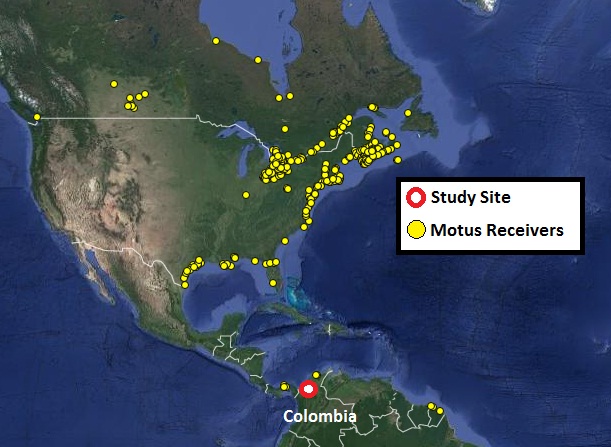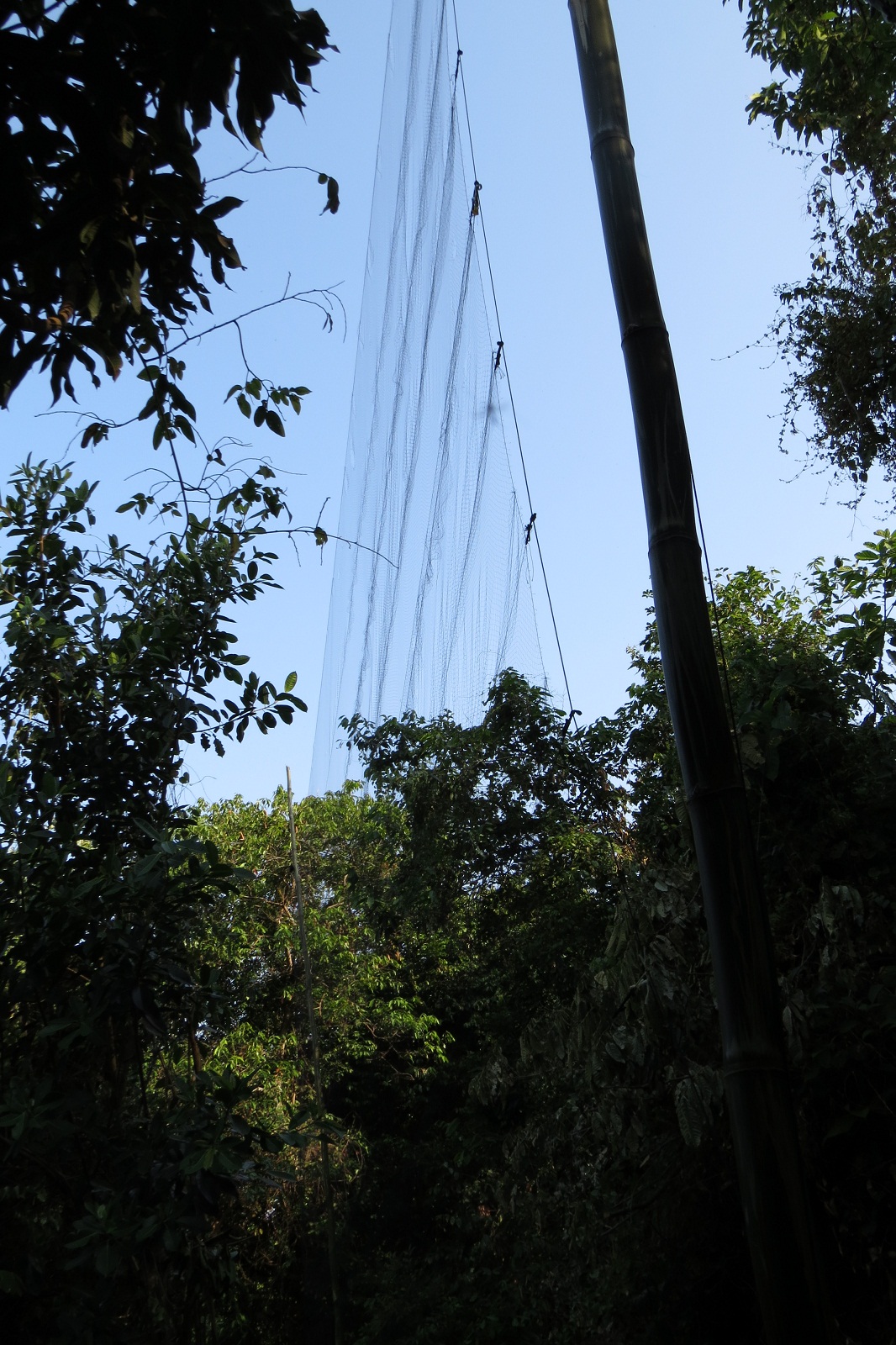Methods
Summary
We will combine three research techniques to answer our main questions:
1. Capturing and marking birds with uniquely coded bird bands will allow us to directly assess the energy reserves that birds are able to gain when we recapture them. Each recapture is like gold-dust, it tells us the rate at which birds lay down fat, the main fuel for migration, and when we multiply the rate by the time spent at the site, we can estimate total energy reserves.
2. Fitting birds with nano-tags will allow us to track birds locally and know how long they spend in northern Colombia but also gives us a chance to find out what happens next. The Motus Wildlife Tracking System now comprises hundreds of collaborators who maintain an array of automated receiving stations throughout the Americas. We expect around 30-40% of birds to be detected at least once on leaving Colombia, giving us unique insights into migration speeds and routes.

3. Observations form an essential component of our methods, allowing us to estimate foraging rates, what birds are eating, and if birds prefer and find more food in one tree or another.
Challenges
Catching cuckoos can be challenging. They are often high in the canopy and rarely stray into traditional mist-nets. Our team though, is specialized in rigging canopy nets using giant bamboos that grow in the forests of Colombia. We are therefore confident that we will be able to catch birds, especially as surveys from 2016 have already revealed the main areas used by cuckoos at our study site, Finca Las Palmeras.
Protocols
This project has not yet shared any protocols.
